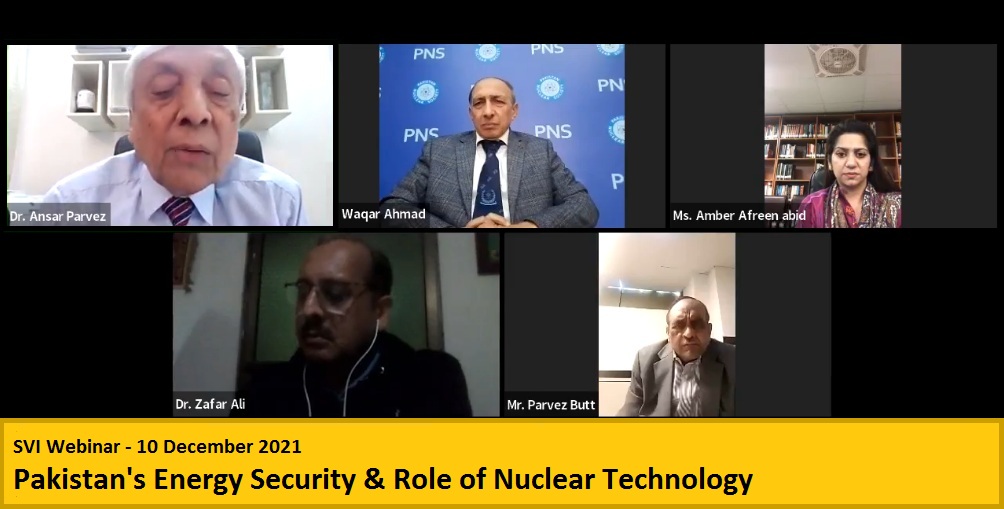Compiled by: Sher bano
Reviewed and Edited by: S. Sadia Kazmi
Strategic Vision Institute (SVI) organized a webinar on “Pakistan’s Energy Security & Role of Nuclear Technology” on 10th December 2021. The webinar was chaired by Mr. Parvez Butt (Former Chairman PAEC). The speakers included Dr. Ansar Parvez (Advisor Nuclear Power, NCA), Dr. Zafar Ali (former Director General SECDIV, MOFA) and Mr. Waqar Ahmad Butt (Executive Member, Pakistan Nuclear Society (PNS)).
The major take away from the webinar was that for past 50 years PAEC has been working indigenously to meet the country’s energy requirements despite international embargos. Nuclear energy can play a distinguished role in Pakistan’s energy sector because it is cheap, reliable, and is environment friendly as compared to other power generation resources such as oil and gas etc. For any country to make progress it requires uninterrupted supply of energy at an affordable price that is also termed as energy security. Moreover the energy policy of a country has direct bearing on the economic security, environmental security, and national security as well. In Pakistan, nuclear technology is being used in the multiple sectors e.g. agriculture, industry, medicine, environment etc. Out of the 17 Sustainable Development Goals (SDGs), nuclear energy in Pakistan is contributing to 12 SDGs. This is reflective of the importance that the nuclear technology carries for the socio-economic development of the country. Pakistan accords utmost importance to nuclear security and technology regulations and considers it a prime national responsibility. Over the years Pakistan has established a comprehensive and effective national nuclear regulatory regime which covers nuclear material and other radioactive materials and associated activities.
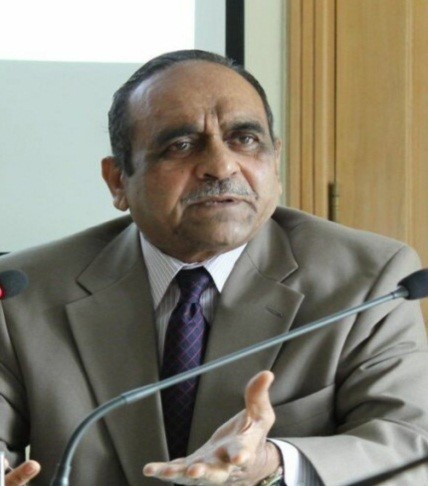 Mr. Pervaz Butt formally inaugurated the session with a warm welcome to the participants and expressed his gratitude for their attendance. While elaborating on the history of Pakistan Atomic Energy Commission (PAEC); he mentioned that the PAEC was created in 1956 when Pakistan was only 8 years old. In 1965 Pakistan had its first research reactor PARR (Pakistan Atomic Research Reactor) in Islamabad. On December 25, 1965, Dr. Usmani (the then Chairman of PAEC) visited Canada and signed an agreement for the construction of Karachi Nuclear Power Plant (KANUPP). The power plant has a long history and continued to operate for 50 years until this year when it was shut down on August 2, 2021. Despite the international embargos since 1974 after the nuclear weapon explosion by India, Pakistan has continued to operate KANUPP. It became possible only because PAEC was contributed toward capability development and enabled Pakistan manufacture its own equipments, devices, and systems through mechanical organization and computers and instrumentation center. The mechanical organization was created by himself while the computer section was created by Mr. Jamshed Hashmi. These organizations continued to work and contributed not only to the nuclear power plants in the country but to the industry as well and earned profit out of that. Pakistan also signed a contact with China to supply equipment manufactured in these workshops for installation in the nuclear power plants that China was constructing at Chashma, Pakistan. He stated that the Pakistan Atomic Energy Commission is a great success story.
Mr. Pervaz Butt formally inaugurated the session with a warm welcome to the participants and expressed his gratitude for their attendance. While elaborating on the history of Pakistan Atomic Energy Commission (PAEC); he mentioned that the PAEC was created in 1956 when Pakistan was only 8 years old. In 1965 Pakistan had its first research reactor PARR (Pakistan Atomic Research Reactor) in Islamabad. On December 25, 1965, Dr. Usmani (the then Chairman of PAEC) visited Canada and signed an agreement for the construction of Karachi Nuclear Power Plant (KANUPP). The power plant has a long history and continued to operate for 50 years until this year when it was shut down on August 2, 2021. Despite the international embargos since 1974 after the nuclear weapon explosion by India, Pakistan has continued to operate KANUPP. It became possible only because PAEC was contributed toward capability development and enabled Pakistan manufacture its own equipments, devices, and systems through mechanical organization and computers and instrumentation center. The mechanical organization was created by himself while the computer section was created by Mr. Jamshed Hashmi. These organizations continued to work and contributed not only to the nuclear power plants in the country but to the industry as well and earned profit out of that. Pakistan also signed a contact with China to supply equipment manufactured in these workshops for installation in the nuclear power plants that China was constructing at Chashma, Pakistan. He stated that the Pakistan Atomic Energy Commission is a great success story.
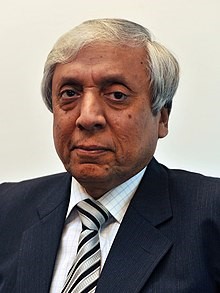 After his introductory remarks Mr. Parvez Butt invited first speaker of the session, Dr. Ansar Parvez to present his views on “Nuclear Power Generation and Pakistan’s Energy Security”. Dr. Parvez stated that other than KANPUP, which successfully operated safely for past 50 years and recently been shut down, there are four nuclear power plants operating in Chashma. With 325 Megawatt to 340 Megawatt generation capacity, they collectively produce total power of 1335 Megawatt. The site for two more nuclear power plants is Karachi where one is functioning and operating well and the other is nearing completion and would be functional next year. The combined nuclear power generation capacity of all six plants would be about 8% of the total installed generating capacity of the country.
After his introductory remarks Mr. Parvez Butt invited first speaker of the session, Dr. Ansar Parvez to present his views on “Nuclear Power Generation and Pakistan’s Energy Security”. Dr. Parvez stated that other than KANPUP, which successfully operated safely for past 50 years and recently been shut down, there are four nuclear power plants operating in Chashma. With 325 Megawatt to 340 Megawatt generation capacity, they collectively produce total power of 1335 Megawatt. The site for two more nuclear power plants is Karachi where one is functioning and operating well and the other is nearing completion and would be functional next year. The combined nuclear power generation capacity of all six plants would be about 8% of the total installed generating capacity of the country.
He opined that for any country to make progress, it requires uninterrupted supply of energy at an affordable price that is also termed as energy security. It means that the energy resources that should be accessible, affordable, and must be reliable when required. It is important because there is a direct relationship between Gross Domestic Product (GDP) and the energy consumption of a country. He shared the graph that showed Pakistan at the bottom meaning low energy consumption and low GDP per person. Currently, Pakistan’s GDP per person is US $1100 to 1200. He further added that energy policy has direct bearing on the economic security. A country cannot progress without accessible and affordable energy. It also has direct implications on the environmental security; because reliance on fossil fuels e.g. coal etc. will have adverse effect on the climate change and temperature would rise. Consequently, all these factors combined will have direct bearing on the national security as well because if the country is not economically strong than it becomes difficult for it to maintain its defence apparatus.
Emphasizing the importance of energy security, he quoted a US think tank stating “Energy security is national security. Because the fate of the US economy is so closely tied to oil, the US has been forced to spend tremendous resources securing the world’s oil supply. This burdens our military, drains defense budgets, and distorts overseas policy objectives.” He further added that energy itself is important as it also affects military policy, defence objectives, as well as the foreign policy. About 40 to 50 years ago people thought that they will run out of fossil fuels and hence they started building nuclear power plants. These are environment friendly and decreased the fear of running out of fossil fuels. After the issue of climate change and when people realized that the global temperature is increasing because of greenhouse gases and CO2s emitted by the fossil fuels, a study carried out in the UK university determined that in order to maintain the global temperatures, one cannot consume 82% of the coal, 49 % of gas and 33% of oil. These are the percentages of global reserves that should not be burned if the global temperature has to stay within limits. The solution to this was production of nuclear power. However, over the last twenty years the total energy production from nuclear power is almost steady and is not increasing. The reason for this is the failure on part of the nuclear industry in mitigating commonly held misperception about the safety of nuclear power plants. Other reason is that the solar energy is seen as a cheaper and environment friendly alternative.
Talking about Pakistan’s conventional energy resources and their worth, he stated that for Pakistan to create 1000 MW power plant that could perform for at least next 30 years, the fossil fuel reserves of Pakistan carry no prospects. The current quantity of oil reserves could only build 1 power plant. Similarly, only 13 power plants can be created with all the available gas reserves, and it is important to keep in mind that both oil and gas reserves are depleting. On the other hand, the KANUPP had been working efficiently for 50 years before it was recently shut down. It generated a huge amount of nuclear energy for Karachi electric grid. In addition to that four nuclear power plants at Chashma i.e., C-1, C-2, C-3, and C-4 are working efficiently. He shared a graph showing the capacity factor of nuclear power plants at Chashma, stating that in the last five years, compared to Independent Power Producers (IPPs) and Hydro and Public sector thermal plants, the generation capacity of Chashma power plants is around 80% which is quite high. Similarly, the K-2 and near completion K-3 nuclear power plant at Karachi have the generation capacity of 1100 MW. Average cost of nuclear energy in the year 2020-2021 remained PKR 9.25 per KWh, which shows that nuclear energy is also cheap. It is also more productive as compared to other power generation resources such as gas and oil and is also more reliable. This qualifies nuclear energy to play a distinguished role in Pakistan’s energy sector.
Based on the above characteristics, ‘Nuclear Power Plan: Vision 2020’ was approved by the National Command Authority (NCA) in 2011. It envisions building nearly 30 nuclear power plants by the year 2050 out of which four have already become operational. As per ‘The Indicative Nuclear Generation Capacity Expansion Plan’ till 2030 approved by the government of Pakistan, the nuclear generation capacity is 3,635 MW. Among the export earnings of Pakistan, nearly 50% goes to energy import bills as the total export earning of Pakistan in year 2020-2021 is US $25.5 b out of which the energy import bill is US $12.9 b. Hence, dependence on imports can be reduced by increasing the use of nuclear energy. Dr. Ansar Parvez concluded his remarks by stating that creating a nuclear power plant is like building one’s own house whereas continued dependence on fossil fuel is akin to living in a rented one.
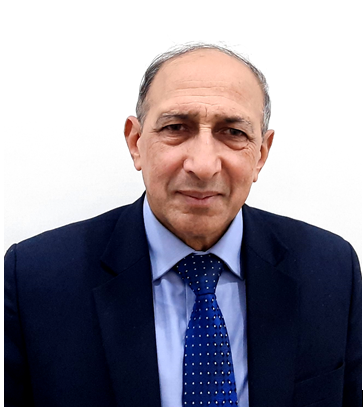 The second speaker Mr. Waqar Ahmad Butt presented his views on “Nuclear Technology for Sustainable Development.” Recalling the tragic incident of Hiroshima and Nagasaki that claimed thousands of lives, he pointed to the power of a small bomb which gave the world an idea to use this small amount of fuel carrying tremendous energy for the benefit of mankind. The first step in this regard was taken by President Eisenhower through his famous UN speech ‘Atoms for Peace’ in 1953, which led to the creation of International Atomic Energy Agency (IAEA) in 1957. Pakistan instantly joined the IAEA while recognizing its importance; as a comprehensive program was chalked out by the IAEA in nuclear material, nuclear medicine, nuclear agriculture, and others.
The second speaker Mr. Waqar Ahmad Butt presented his views on “Nuclear Technology for Sustainable Development.” Recalling the tragic incident of Hiroshima and Nagasaki that claimed thousands of lives, he pointed to the power of a small bomb which gave the world an idea to use this small amount of fuel carrying tremendous energy for the benefit of mankind. The first step in this regard was taken by President Eisenhower through his famous UN speech ‘Atoms for Peace’ in 1953, which led to the creation of International Atomic Energy Agency (IAEA) in 1957. Pakistan instantly joined the IAEA while recognizing its importance; as a comprehensive program was chalked out by the IAEA in nuclear material, nuclear medicine, nuclear agriculture, and others.
Mr. Butt stated that the first nuclear medicine center was created in Karachi in 1960. Currently Pakistan has 18 nuclear medicine centers while the 19th is in process. More than 80% cancer patients in Pakistan are treated at Pakistan Atomic Energy Commission (PAEC) hospitals. Likewise, the first agriculture center was set up in 1962 with the main purpose of developing variety of new crops such as maize, wheat, sugar cane, and to increase their yield as well. The cotton crops produced by Pakistan are of diverse quality. The cotton produced through agri-biotechnology in the country has brought revolution in the field of agriculture and has also become popular worldwide.
The first nuclear reactor became operational in Pakistan in 1965. The radio isotopes used in medicines were earlier imported but after the formation of Pakistan Institute of Science and Technology (PINSTECH), all the radioactive isotopes are being produced locally at the institute. These isotopes are also used for hydrology purposes, for ground water movement, salinity, and other related issues. There is a problem of fresh water in the coastal areas; hence the water desalination plant has been installed in Karachi by indigenous efforts of PAEC. Another division at PINSTECH works on the development of laser land leveler, which is important in the agriculture sector as 30% of water can be saved and the agricultural yield can increase by 20%. Another project of PAEC is Pakistan Radiation Services (PARAS) in Lahore, which can sterilize medical goods through gamma radiations and can also be used for the preservation of food, medicines, and a range of products. The value addition in different materials is another important use of nuclear energy in which the simple stones if treated with neutron at PINSTECH could tremendously increase their value.
During the nuclear embargos on India in 1974 after it tested the nuclear bombs, Pakistan also had to bear the brunt as Canada adopted stringent safeguards on the sale of Canadian nuclear materials and equipments. In lieu of that Canada suspended the fuel supply to KANUPP in 1976. It was only due to the efficiency of PAEC engineers that the nuclear plants in Pakistan kept on running and contributed to the the sustainable development of the country. PAEC has cradle to grave approach; form the exploration, mining, milling, refining, fuel fabrication, and fuel burner to the waste disposal, all the steps are carried out by the PAEC indigenously. The main reason behind the progress of the country in the field of nuclear energy is the commitment and sincerity of its leadership.
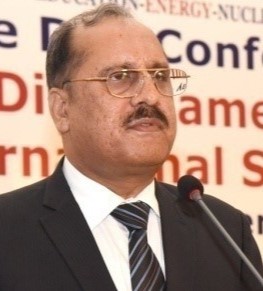 The session Chair then invited Dr. Zafar Ali to deliberate on “Nuclear Technology Regulations: A Pakistani Perspective.” Describing nuclear technology as explained by the IAEA and PNRA, Dr. Ali stated that it is a technology that involves nuclear reactions of atomic nuclei. But from the export control regulation’s point of view, nuclear technology is defined as specific information which is required for the development, production or use of a controlled item. Generally these controlled items are reflected in the national control lists and the multilateral technology control regime. Nuclear technology includes nuclear reactors, nuclear medicines, and nuclear weapons. It is also used across multiple sectors e.g. scientific research, food, agriculture, industry, medicine, and environment etc. Out of 17 SDGs, nuclear energy in Pakistan is contributing to 12 SDGs. This shows the importance of nuclear technology in the socio-economic development of the country.
The session Chair then invited Dr. Zafar Ali to deliberate on “Nuclear Technology Regulations: A Pakistani Perspective.” Describing nuclear technology as explained by the IAEA and PNRA, Dr. Ali stated that it is a technology that involves nuclear reactions of atomic nuclei. But from the export control regulation’s point of view, nuclear technology is defined as specific information which is required for the development, production or use of a controlled item. Generally these controlled items are reflected in the national control lists and the multilateral technology control regime. Nuclear technology includes nuclear reactors, nuclear medicines, and nuclear weapons. It is also used across multiple sectors e.g. scientific research, food, agriculture, industry, medicine, and environment etc. Out of 17 SDGs, nuclear energy in Pakistan is contributing to 12 SDGs. This shows the importance of nuclear technology in the socio-economic development of the country.
Technology and regulations are often posed as adversaries. Technology symbolizes markets, enterprise, and growth whereas regulations represent government, bureaucracy, and restrictions. Regulations can retard all three stages of technological change that include invention, innovation, and diffusion. At the national level there are two important pillars of the regulatory regime: one is the formal system which revolves around legislative instruments, organizations, licensing authorities, and enforcement mechanisms, however there is also this complementary mechanism which is meant to supplement or complement the formal system. Complementary mechanism includes capacity building, creating awareness, and strengthening enforcement through other compliance mechanisms such as guidelines and internal compliance systems etc. Pakistan accords utmost importance to nuclear security and technology regulations and considers it as the prime national responsibility. Over the years Pakistan has established a comprehensive and effective national nuclear regulatory regime which covers nuclear material and other radioactive materials and associated activities. The three pillars of regulatory regime are: 1) The Legislative and Regulatory Framework which includes administrative systems and measures, governing security of nuclear material, radioactive facilities, and activities; 2) Institutions and Organizations which are responsible for ensuring the implementation of regulatory framework and administrative systems of nuclear security; 3) Systems and Measures which are meant for the prevention from any nuclear security mishap. The PAEC ordinance of 1965, PNRA ordinance 2001, Strategic Export Control Act 2004, and the National Command Authority Act of 2010 fall within these three pillars of national regulatory framework. On the institutions and organization side, the main agencies and organizations which are regulating the nuclear technologies are National Command Authority (NCA), Pakistan Atomic Energy Commission (PAEC), Pakistan Nuclear Regulatory Authority (PNRA), Strategic Export Control Division (SECDIV), Pakistan Centre of Excellence and Nuclear Security (PCENS), and Pakistan Institute of Engineering and Applied Sciences (PIEAS).
Pakistan takes nuclear technology regulations and security aspects very seriously and its demonstrated performance over the years manifests that Pakistan has done a lot in this area. Pakistan is also a party to various international instruments that are aimed at strengthening national and global nuclear security infrastructure. In March 2016, Pakistan ratified the amendment to Convention on the Physical Protection of Nuclear Material (CPPNM) and also subscribed to the IAEA code of conduct on safety and security of radioactive sources and its true supplementary guidance on export and import of radioactive sources and on management of disuse of sources. These IAEA codes of conduct are also being used as guidelines for radioactive sources within the country. PNRA regulates several aspects of the nuclear security and provides support, guidance, and recommendations on physical protection and prevention of illicit trafficking, security of radioactive sources, and response to unauthorized acts involving nuclear and radiological materials. The nuclear regulatory systems of Pakistan’s nuclear authority have developed over the years. The Pakistan Nuclear Safety Committee was formed in 1964, the Nuclear Safety and Licensing Division Was created in 1970, Directorate of Nuclear Safety and Radiation Protection was formed in 1994, Convention on Nuclear Safety was signed in 1994, Pakistan Nuclear Regulatory Board was created in 1994, and finally Pakistan Nuclear Regulatory Authority (PNRA) was created in 2001.
While elaborating on various landmarks achieved during the process of creating regulatory control systems, Dr. Zafar Ali stated that SECDIV was established in 2007 as a licensing and implementing authority. The purpose was capacity building through enforcement agencies etc. Licensing and enforcement rules were fortified and then subsequently revised over the time. Internal Compliance Program was also introduced by the SECDIV in 2014 and Policy Guidelines on Strategic Export Controls was issued in 2016. Strategic Export Control Act 2004 covers the proliferation financing which is considered an offence as per the act. In August 2018, Pakistan established committee for coordination, review and monitoring of the targeted financing sections related to proliferation financing. On the enforcement side Pakistan’s custom has played a lead role in monitoring export and import without the license issued by the SECDIV or by the PNRA. As the nuclear security is linked with the safety of environment, the risks need to be managed effectively. Pakistan has also designated the entry and exit points with radiation detecting equipment to prevent illicit trafficking of radioactive materials. With regards to the complementary mechanisms, various steps have been taken so that nothing should stay out of regulatory controls.
In his concluding remarks Dr. Zafar Ali stated that the Nuclear Threat Initiative (NTI) has categorized Pakistan in its nuclear security index of 2020 as the most improved country for the nuclear security measures. Lastly, he commented that the regulatory arrangements while preventing proliferation of weapons of mass destruction should not be allowed to hamper international cooperation for the peaceful uses of technology. A non-discriminatory approach towards civilian nuclear cooperation will not only benefit the global non-proliferation regime but also help in achieving the UN sustainable goals.
Observations and Question & Answers session:
Mr. Niaz Ahmed (Executive Member, Pakistan Nuclear Society) acknowledged the importance of nuclear energy and asked the status of indigenization of Pakistan’s nuclear power plant as the country is still heavily development on China in this regard. Dr. Ansar Parvez replied responded to the question and maintained that the vendor of the KANNUP stopped supplying fuel, technology, spare parts etc. in 1976 and after that PAEC operated that plant for 50 years without any external help. Hence, this is reflective enough of the fact that Pakistan has developed indigenization. Moreover, the Chashma nuclear power plants were even though built by China, they were later handed over to PAEC and even during the construction the PAEC was involved. Now the operation and maintenance of these plants is also entirely looked after by the PAEC. As far as the construction of the nuclear power plants is concerned, there are a few things that Pakistan can do but naturally Pakistan cannot do all the things because of the very weak industrial infrastructure in the country. In a nuclear power plant, 20% of the things are nuclear and rests are similar to any conventional power plant. Hence Pakistan cannot build a conventional or a nuclear power plant by itself. But this does not mean that we cannot build it or should not build it. Another aspect is that for a nuclear power plant to be built, it needs lot of investment and should be completed quickly so that one can start generating revenues. Therefore, almost all countries right now have some kind of interdependence on one another for building of a power plant including the nuclear power plant. For Pakistan the best form of indigenization is to maintain and manage its own plants and locally develop spare parts for them. Mr. Pervaz Butt also added that the desalination plant built at KANUPP was built indigenously by the mechanical and electrical engineers of Karachi nuclear power plant. That was the first indigenous effort by Pakistan. Subsequently when the contracts for Chashma nuclear power plants were signed, the contract to supply the manufacture equipment for the plants was signed the same evening. Hence, there has been indigenization; we cannot make all the equipment of the plant in Pakistan but all the countries of the world depend on each other for specific equipments, and just like them Pakistan is no different. Pakistan has the capability to build all its replacement equipment and spare equipment, and has been operating them very well. PAEC has been a success story because it is a professional organization and all the other technical organizations outside the armed forces and PAEC must follow this route.
Mr. Zafar Iqbal (Senior Research Associate, Strategic Vision Institute) asked how could nuclear energy be used to address Pakistan’s huge energy shortfall as compared to other clean sources of energy? Dr. Ansar Parvez responded with a famous quotation “do not put all your eggs in one basket,” which he said was also true for energy resources. Pakistan or any other country in the world should never ever depend or rely only on one particular source. One should have the combination of resources in its energy basket. Nonetheless, whichever energy resource is being used, it should be as indigenous as possible. Relying on imports could be counterproductive especially in the cases of price hikes. Furthermore, the energy resources being used should not affect the environment. One should always have base load operating power plants e.g. if the energy requirement of a country is 30000 MW then the minimum base load should always be there to fulfill the requirement. Nuclear is one base load power plant that does not depend on solar energy, air pressure, or water etc. The combination of nuclear in Pakistan’s energy production should be 20% because it will continue to provide reliable energy from base load.
Ms. Sehrish Amjad (Student, Quaid-i-Azam University) asked about the biased attitude of international export control regimes and alternative options for Pakistan. Dr. Zafar Ali replied that Pakistan is not party to any export control regime though Pakistan has formally applied for membership of Nuclear Suppliers Group (NSG). With regards to other options for Pakistan, since there are no other international export control regimes and even within the regime the decision to transfer any technology is taken by the member states, Pakistan should have comprehensive and effective procedures in order to be technically qualified and eligible. So that whenever the political circumstances are conducive, Pakistan could become part of the international export control regimes. Pakistan is following the procedures and guidelines by the IAEA in this regard.
Mr. Behrawar Shahzad (Student, Quaid-i-Azam University) asked what measures has the government taken for the nuclear waste management? Mr. Pervaz Butt clarified that a nuclear reactor hardly produces any waste as compared to the waste that is generated by the coal or gas power plant. In case of KANUPP, the spent fuel which is the waste of that power plant is all stored in a swimming pool that is 60 ft by 40 ft filled with water. Hence, it does not have a large quantity of waste which is one of the advantages of the nuclear power plant. If operated properly and carefully they generate very little amount of waste. With efforts by PAEC, Pakistan’s nuclear power plants are operating at maximum capacity. Mr. Waqar Ahmad also commented that there are different categories of nuclear waste such as high level waste that needs to be dumped very carefully. This is mainly the responsibility of the PAEC’s operator. There is a stringent check in place by the nuclear regulatory authority that has identified only certain specific places for dumping the waste. In case of a liquid waste, different types of containers are used, and different specified containers are used in case of solid waste. Waste management is not an issue for Pakistan because right now it is operating only five nuclear power plants which are producing very little waste.
Ms. Sherbano (Research Affiliate, Strategic Vision Institute) asked about the prospects of the recently signed nuclear agreement between PAEC and China Zhongyuan Engineering Cooperation on 8th September 2021 and how it could further deepen the nuclear energy cooperation? Dr. Ansar Pervaz responded that for the last 50 years there has been cooperation between China and Pakistan in the area of civil nuclear technology. China is providing nuclear reactors and fuel for smooth operation of nuclear power plants in Pakistan. Any kind of agreement would indicate that China would continue to help and assist Pakistan in the development of its civil nuclear power plant facilities.
Mr. Pervaz Butt stated in his concluding remarks that we still have not searched each and every corner of Pakistan for uranium; maybe we can find natural uranium somewhere and mine it ourselves. Nuclear power has a future and there are plants being planned that will use spent fuel. In the end Mr. Pervaz Butt (Former Chairman PAEC) thanked the panelists for their distinguished contribution to the country, and for their participation and excellent discussion in the webinar.
Media Coverage:
The SVI webinar was covered by print and electronic media and streamed live on the social media. The recording is also available on the SVI official YouTube Channel and SVI Website.
The News
https://e.thenews.com.pk/detail?id=35262
DAWN
The Nation
PTV World News
https://www.facebook.com/svicom/videos/613466896440493
SVI Facebook
https://www.facebook.com/svicom/videos/586458692464124
SVI YouTube Channel


